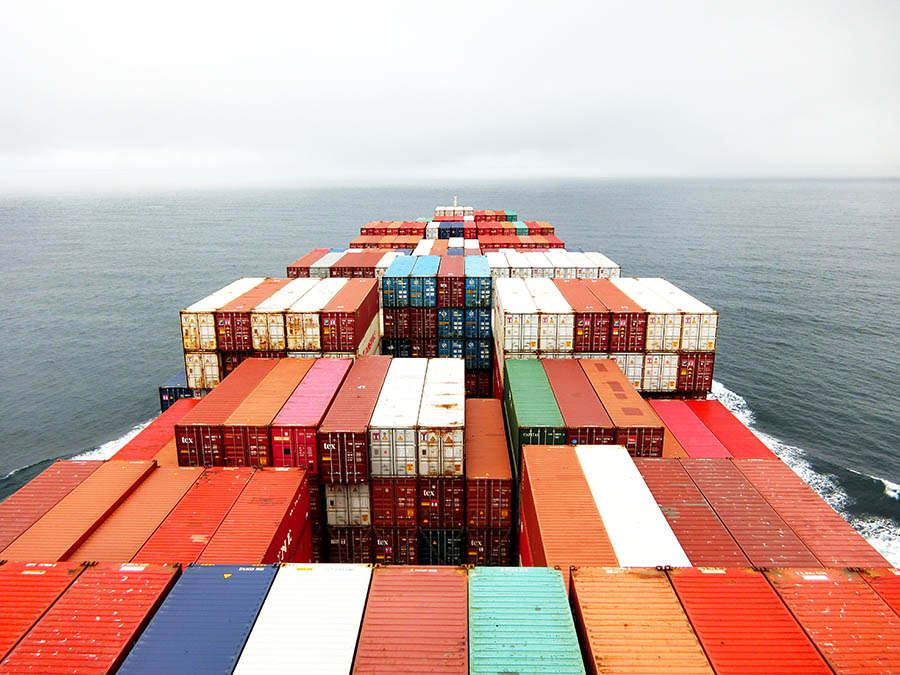With industry and commerce becoming more globally interconnected than ever, businesses of all sizes and scales find themselves facing the challenges of shipping their products across international borders. With wooden shipping pallets serving as such an essential element of the supply chain that two billion pallets are in active use in the United States alone at this very moment. Understanding the differences between pallets and pallet standards domestically and on the international stage is key to taking your products overseas.
Size Differences
The most obvious way that wood pallets vary by country and region is in size. In the US, the most commonly used size of pallet is the 48”x40” stringer pallet, which sees wide use throughout the grocery industry, among others. Certain industries have specific other pallet sizes that are best suited to their needs; for example, the dairy industry makes extensive use of 40”x40” pallets, and 42”x42” pallets are widely used by telecom and paint manufacturers. Similarly, other countries use a variety of pallet sizes, but each region does have a few most commonly used sizes.
- 39.37 x 47.24 inches (1000mm x 1200mm) commonly used in Europe, Asia, and the UK
- 43.30 x 43.30 inches (1100mm x 1100mm) commonly used in Australia and Asia
- 42 x 42 inches (1067mm x 1067mm) commonly used in Europe, Asia, and North America
- 31.5 x 47.24 inches (800mm x 1200mm) commonly used in Europe
This last size, the 800mm x 1200mm pallet, is the EUR-pallet, the standard size designated by the European Pallet Association (EPAL). Pallets that conform to the EPAL standard are eligible for the European Pallet Pool, a “pallet for pallet” exchange system. Additional specifications beyond size in order to meet this standard, of course. The EPAL is a four-way pallet held together with at least 78 nails arranged in a specific pattern, and the assembled pallet has a safe working load of 1,500kg. Between 450-500 million of these pallets are presently in circulation throughout Europe.
United Kingdom Pallet Sizes
With United Kingdom’s exit from the European Union, it’s important for US businesses shipping internationally to remember that the UK standard pallet is a different size than the EUR-pallet; the most common pallet size in the UK is 1000mm x 1200mm.
Heat Treated Pallets
The other major difference between wooden pallets used domestically and those involved in international shipping is the treatment of the wood. The International Plant Protection Convention (IPPC) has set forth a number of global standards and guidelines for regulating wood packaging materials that cross international borders as part of global trade. The reason for these precautions is to prevent the introduction and spread of organisms that may be harmful to plant life into new ecosystems. The current set of regulations — the International Standards for Phytosanitary Measures No. 15 (ISPM-15) — have been adopted by 85 countries, and wood packaging. Shipments that do not meet these regulations risk being chemically fumigated at the shipper’s expense, being turned away at the border, or being destroyed by customs officials.
There are two options available to wood pallet manufacturers to meet IPPC phytosanitary standards: heat treatment that raises the core temperature of the wood to 56 degrees Celsius (or 140 degrees Fahrenheit) for a minimum of 30 minutes, or chemical fumigation using methyl bromide for 24 hours.
Heat treatment is a separate process from the kiln-drying that most lumber goes through in preparation for use. Kiln drying simply removes the excess moisture in the wood to reduce its weight and make it less likely to warp as it ages. This process does not last long enough, nor reach high enough temperatures, to kill any pests or larva that may exist inside the wood. As such, a separate heat treatment process is necessary for phytosanitary purposes. When a manufacturer registered with an IPPC accredited inspection agency has completed the heat treatment or chemical fumigation of a wooden pallet or other wood packaging, the ISPM-15 symbol is stamped, stenciled, or branded onto two opposite sides of the exterior surface of the pallet, displaying to customs officials that the packaging is compliant with IPPC standards.
Companies that are new to international shipping may not have needed ISPM-15 compliant pallets in the past, since these phytosanitary treatments are not mandated for domestic shipping. The one exception to this requirement is trade across the US-Canada border; due to the fact that many of the forests from which both countries draw their lumber span the national border between the two countries, there is less concern about spreading invasive species between the two nations. As long as the lumber that makes up your pallets originated in either the United States or Canada, and there is no visible sign of pest infestation, heat treatment may not be required for pallets crossing the border from the US to Canada or vice-versa. However, some industries may still desire heat-treatment to sterilize wood pallets for other sanitary reasons.
About Greenway Products & Services
Greenway Products & Services, LLC is the largest pallet re-manufacturer and recyclers in NY, NJ, PA, MD, and DE. We also accept scrap wood from our customers that we turn into valuable resources. Greenway is a highly-rated, full-service pallet management company. Contact us for a quote today at sales@greenwaypsllc.com. Visit our website, greenwaypsllc.com or call us at 732-442-0200. We can deliver trailers to you on a moment’s notice throughout the NY-NJ-PA-MD-DE Mid-Atlantic area.




Leave A Comment